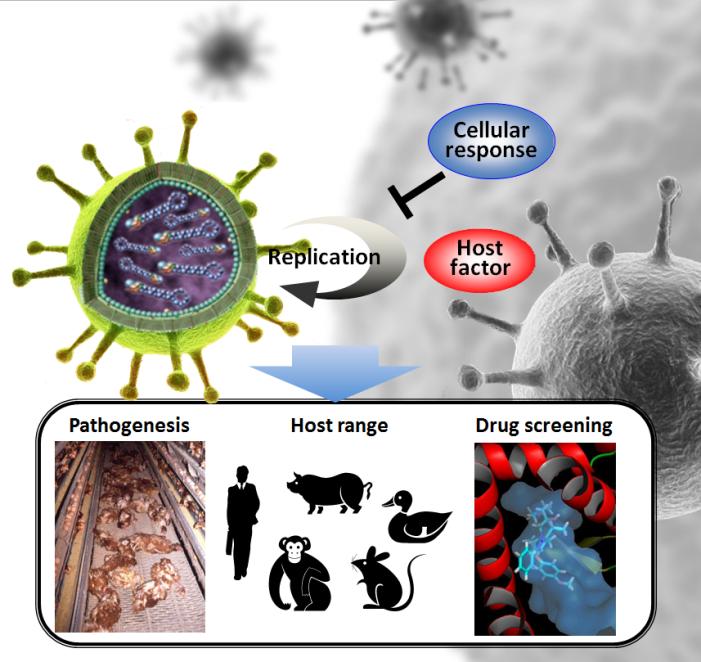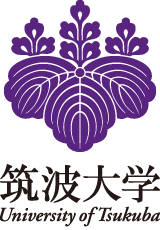01Research overview
Elucidation of cell functions that regulate influenza virus infection
Influenza A virus (IAV) causes a high societal impact across the globe. The often severe symptoms from influenza infection and the inflammation caused in the respiratory tract, results in excess of 500,000 human deaths worldwide, annually. Our research therefore, strives to discover important outcomes which will help control influenza in both humans and animals, including pandemic avian influenza.
Aquatic birds are the reservoir of influenza A viruses in nature and a source for transmission of influenza A viruses to other animal species. The avian influenza A viruses hardly replicate in humans. However, the molecular mechanism how avian influenza overcomes the species barrier is unknown. The aim of our study is to clarify the molecular mechanism of species barrier and pathogenesis of influenza virus. We also try to develop anti-viral compounds that can block the viral infection.
Since viruses have the limited number of viral genes, viruses need to hijack cellular functions and machineries for viral infection. The virus proliferation is dependent on the compatibility between viral factors and host factors in a species- and cell type-specific manner. The cellular machineries, including the innate immunity as anti-viral host defense system, are activated in response to the virus infection. Therefore, the species- and cell type-dependent viral replication and pathogenicity are determined by the competition between virus and host cell (factors).
Aquatic birds are the reservoir of influenza A viruses in nature and the source for transmission of influenza A viruses to other animal species. The avian influenza A viruses hardly replicate in humans, suggesting that it requires an adaptation to human host factors for overcoming the species barrier. However, the molecular mechanism how pandemic avian influenza overcomes the species barrier is unknown. The aim of our study is to clarify the molecular mechanism of species barrier and pathogenesis of influenza virus from point of view of virus replication and host immune responses. We also try to develop anti-viral compounds that can block the viral infection.

-

- Research Division Leader
- Professor Atsushi Kawaguchi
01研究概要
インフルエンザウイルスの感染現象を規定する細胞機能の解明
ウイルスは感染した宿主細胞の中でのみ増殖する感染体であり、菌類とは異なり、栄養分のみでは増殖しません。ウイルスの細胞表層への結合から子孫ウイルス粒子の放出にいたるまでの過程では、数多くの宿主細胞の生理機能と宿主細胞由来の遺伝子産物(以下、宿主因子)がウイルスによってハイジャックされています。一方、宿主細胞は生体防御系を含む、生理機能の緊急応答を発動し、生命プロセスを維持しようとします。従って、ウイルスによる宿主因子の強奪と感染に応答した生理機能との攻防によって、ウイルスの種特異性や病原性は規定されています。
A型インフルエンザウイルスは、カモなどの水禽類を自然宿主とし、水禽類から陸生の鳥や哺乳動物へウイルスは伝播します。しかし、鳥から単離されたウイルスはヒトでは増殖しにくく、鳥由来のウイルスが種の壁を超えるには、ヒトの宿主因子に適応する必要があることが推測されます。また、自然宿主である水禽類では、インフルエンザウイルスが感染しても病原性を示しません。そこで我々は、インフルエンザウイルスの(1)種特異的な感染現象を規定する分子機構、と(2)病原性を規定する分子機構を明らかにすることを目標に、インフルエンザウイルスの増殖に関与する宿主因子と生理機能の応答機構を研究しています。また、得られた成果をもとに、抗ウイルス薬の開発も展開しています。

-

- 川口 敦史 教授


